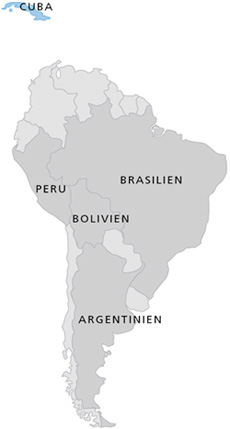EBM MASA Community, Hilfe für Lateinamerika, Pastor Carlos Waldow

Cuba
Cuba is probably the best known island of the Antilles. The “Green Crocodile” lies stolidly in the clear waters of the Caribbean Sea, surrounded by many smaller islands. Sugarcane and tobacco impacted Cuba’s history; they were the reason for the shipment of hundreds of thousands of slaves from Africa to the Island. Their descendants have considerably determined the physical appearance of today’s population. As to politics, the country went through many phases: After the Spanish Colonial rule, agitated times set in, leading to their climax in 1959 with the Cuban Revolution led by Fidel Castro. The capital of Cuba is Havana.
Religious background
When Columbus discovered the Island in 1492, some 100,000 Indians lived on it. 50 years later, only 5,000 of them had been left. Spain ruled the country also in religious matters. With the African slaves and their descendants, African rites and religious customs (voodoo) were also introduced. The Cuban Revolution made atheism the “state religion”, which dominated in public life. Evangelical mission work only slowly set in in the 19th century. Strangely enough, the biggest growth spurt of the evangelical churches occurred in the 1990s and has been going on till today.
Projects in Cuba:
